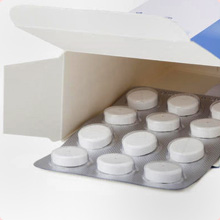Categories
- Alternative medicines
- Anti-infectives
- Antineoplastics
- Biologicals
- Cardiovascular agents
- Central nervous system agents
- Coagulation modifiers
- Gastrointestinal agents
- Genitourinary tract agents
- Hormones
- Immunologic agents
- Medical gas
- Metabolic agents
- Miscellaneous agents
- Inactive Ingredients
- Nutritional products
- Plasma expanders
- Psychotherapeutic agents
- Radiologic agents
- Respiratory agents
- Topical agents
- Uncategorized
This medication is used as a cleansing product to help treat acne and other skin conditions (e.g., seborrheic dermatitis, rosacea). This product contains an antibacterial agent and a drying agent which promotes shedding of the top layer of skin (keratolysis).
How to use Cerisa Top
This medication is for use on the skin only. Clean off make-up, oil and excess dirt from your face with a gentle cleanser before using this product. Wet the affected areas of skin before washing with this medication.
If you are using the liquid cleanser product, apply a generous layer of medication once or twice daily; or use as directed by your doctor. Gently massage it into the affected skin for 10 to 20 seconds until a full lather forms; rinse thoroughly and pat dry.
If you are using the cleansing cloth product, wash the affected areas with a cleansing cloth once or twice daily, or as directed by your doctor. First wet your face with water. Then wet the cloth with a little water and work into a full lather. Cleanse your face with the cloth for 10-20 seconds. Do not get the lather into your eyes. Rinse thoroughly and pat dry.
If excessive drying occurs, you may need to rinse the cleanser off sooner or use it less often. Avoid getting any of this medication in the eyes or inside the nose or mouth. Consult your doctor or pharmacist for further details.
Inform your doctor if your condition does not improve or worsens.
Redness, irritation or scaling of the skin may occur. If any of these effects persist or worsen, notify your doctor promptly.
Remember that your doctor has prescribed this medication because he or she has judged that the benefit to you is greater than the risk of side effects. Many people using this medication do not have serious side effects.
Tell your doctor immediately if any of these serious side effects occur: cracked skin.
Tell your doctor immediately if any of these unlikely but serious side effects occur: unusual weakness/fatigue, dark urine, yellowing eyes or skin, other signs of infection (e.g., fever, persistent sore throat), easy bruising/bleeding.
You may be at increased risk for side effects if this medication is used on raw or broken skin. Consult your doctor for details.
A serious allergic reaction to this drug is unlikely, but seek immediate medical attention if it occurs. Symptoms of a serious allergic reaction include: rash, itching/swelling (especially of the face/tongue/throat), dizziness, trouble breathing.
This is not a complete list of possible side effects. If you notice other effects not listed above, contact your doctor or pharmacist.
In the US -
Call your doctor for medical advice about side effects. You may report side effects to FDA at 1-800-FDA-1088.
In Canada - Call your doctor for medical advice about side effects. You may report side effects to Health Canada at 1-866-234-2345.
Before using sulfacetamide with sulfur, tell your doctor or pharmacist if you are allergic to it; or to other products containing sulfa or sulfur; or if you have any other allergies. This product may contain inactive ingredients, which can cause allergic reactions or other problems. Talk to your pharmacist for more details.
This medication should not be used if you have certain medical conditions. Before using this medicine, consult your doctor or pharmacist if you have: kidney disease.
This medication should be used only when clearly needed during pregnancy. Discuss the risks and benefits with your doctor.
Based on information of related drugs, this medication may pass into breast milk. Consult your doctor before breast- feeding.
Your doctor or pharmacist may already be aware of any possible drug interactions and may be monitoring you for them. Do not start, stop, or change the dosage of any medicine before checking with them first.
Before using this medication, tell your doctor or pharmacist of all prescription and nonprescription products you may use, especially of: skin products containing silver (such as silver sulfadiazine).
This document does not contain all possible interactions. Therefore, before using this product, tell your doctor or pharmacist of all the products you use. Keep a list of all your medications with you, and share the list with your doctor and pharmacist.
If overdose is suspected, contact your local poison control center or emergency room immediately. US residents can call the US national poison hotline at 1-800-222-1222. Canadian residents should call their local poison control center directly. This medicine may be harmful if swallowed.
NOTES:
Do not share this medication with others.
MISSED DOSE:
If you miss a dose, use it as soon as you remember. If it is near the time of the next dose, skip the missed dose and resume your usual dosing schedule. Do not double the dose to catch up.
STORAGE:
Store at room temperature away from light and moisture. Consult your pharmacist or product labeling for the exact temperature range. Do not store in the bathroom. Keep all medicines away from children and pets.
Do not flush medications down the toilet or pour them into a drain unless instructed to do so. Properly discard this product when it is expired or no longer needed. Consult your pharmacist or local waste disposal company for more details about how to safely discard your product.
Information last revised May 2010. Copyright(c) 2010 First Databank, Inc.


